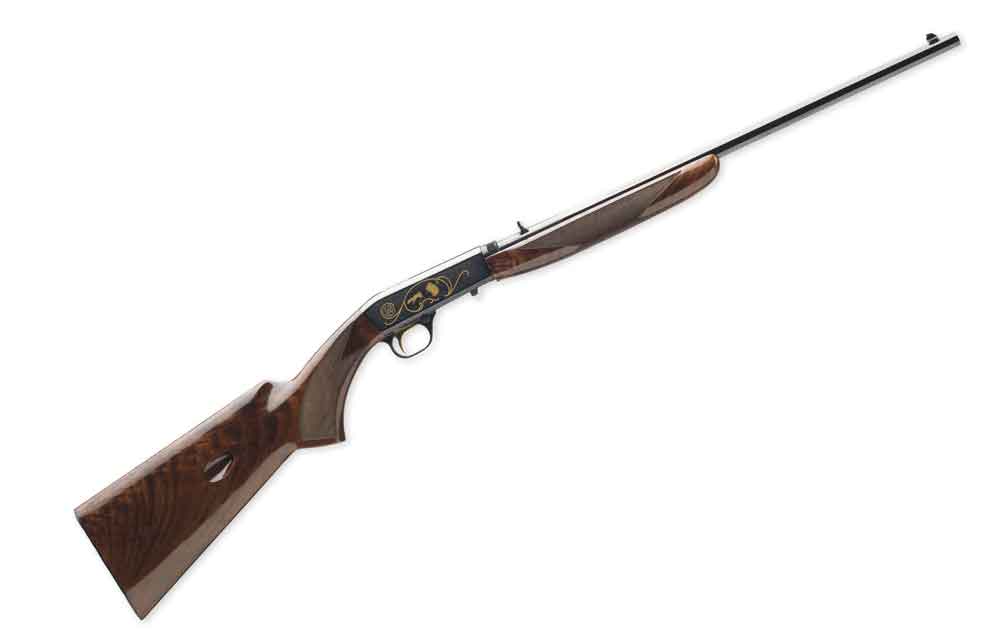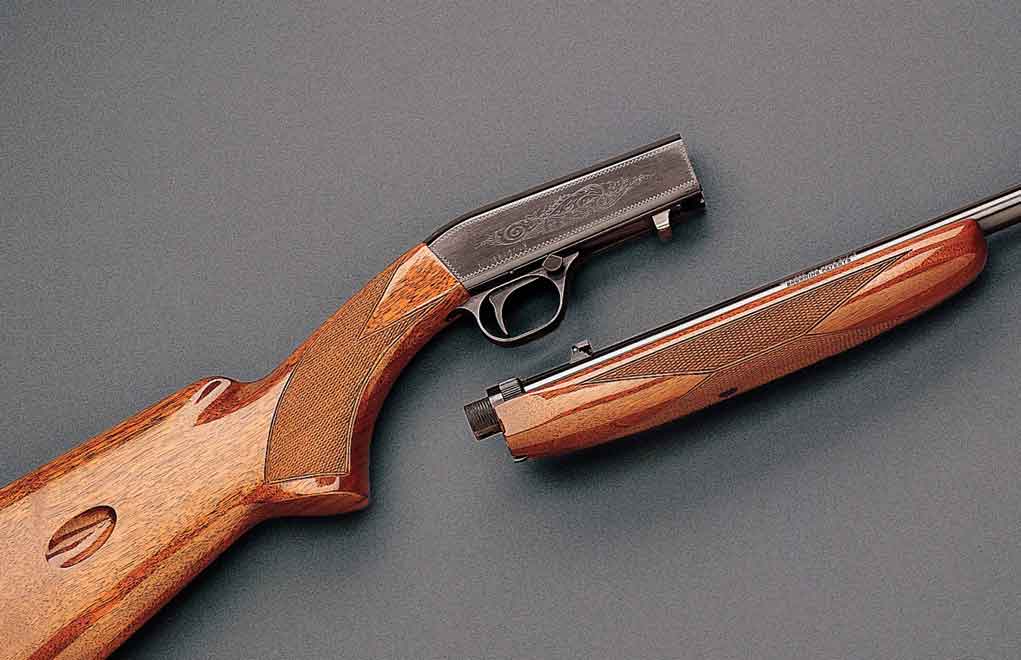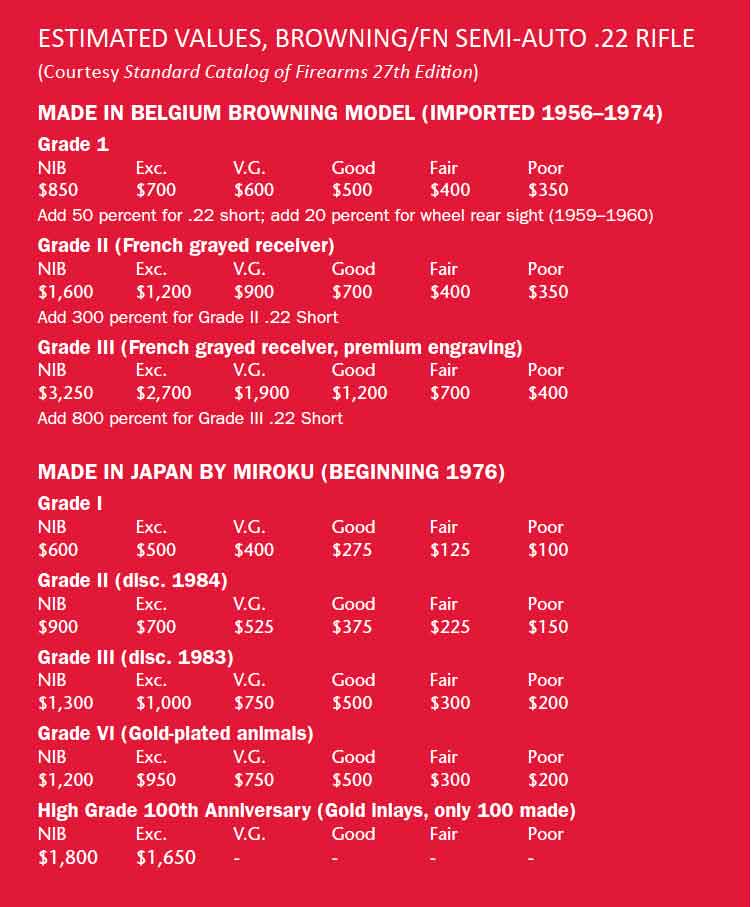When a gun has been in production for more than 100 years like the SA-22, labeling its design as a ‘success’ is a massive understatement.
Why this semi-auto rimfire is one slick shooter:
-
- The svelte little .22 rifle has been in production for more than a century.
- It was designed by John Browning.
- It was also the first semi-auto chambered for the .22 rimfire cartridge.
- Spent casing are ejected downward.
- The cocking button is on the underside of the receiver.
- The Browning .22 Auto Rifle is a takedown.
- Top examples of certain Belgium-made versions of the rifle can fetch $3,250.
The svelte little .22 rifle, known by Browning variously as the SA-22, .22 Semi-Auto or just Auto Rifle, has been in production for more than a century. The John M. Browning design was the first semi-auto rifle made for the .22 rimfire cartridge. It has been called a rifle that was appropriately designed for its cartridge — slim, light and easy handling. It was manufactured by Fabrique Nationale in Belgium beginning from 1914, but it wasn’t imported to the United States until 1956. Production continued at FN until 1974, when it was moved to Miroku in Japan, where most Browning rifles and shotguns have been made ever since.

This Limited Edition SA-22 commemorates the 100th anniversary of the rifle. A similar rifle was made by Remington from 1919 to 1949 as the Model 24 and 241, under license from Browning. The main difference in the Browning and Remington versions had to do with a slight variation in the take-down system for removing the barrel. The Brownings were also cosmetically a bit nicer, with attractive checkering, wood, fit and finish.
I recall as a youngster seeing my first Browning .22 Semi-Auto at a gun store in downtown Austin, Texas, and being quite impressed. This was in the late ‘50s, and I recall the price being about $85. I was especially impressed with the .22 Short model. - My experiences with Texas fox squirrels taught me that .22 Short hollow-points were a fine choice for bushy-tails at reasonable ranges. Over the years I kept telling myself that I really needed one of the Short models, but somehow I never got around to buying it. They have been discontinued for several years, and these days the used ones are going for $1,000 or more. Lesson here for younger shooters — don’t wait too long for something you really “need.”
The Unique Browning .22 Auto Rifle
The .22 Auto Rifle design has several unique features that many shooters find appealing. The most noticeable is the downward ejection of empties. I’ve heard that this was to avoid ejecting the shells into the face of a person standing next to the shooter — the downside is that a hot shell can drop down into the sleeve of the shooter’s shirt.

- Another distinctive feature is the cocking button on the underside of the receiver. This design, coupled with the ejection port on the bottom, gives the SA-22 a nice, flat surface on both the right and left sides of the receiver. Previously mentioned is the take-down feature, allowing the barrel to be easily removed without tools by way of the knurled ring at the rear of the barrel that can be turned with the fingers.
- Operation of the Browning .22 Auto is simple: Turn the loading tube in the buttplate to the left and pull it out far enough to expose the port on the right side of the buttstock, insert up to 10 .22 LR cartridges or 16 shorts (if you have a shorts-only model), reach under the receiver in front of the trigger guard, and pull back and release the cocking lever.
Make sure to use the button-operated safety in the front part of the trigger guard. Some of the early models have the loading port on top of the buttstock, directly behind where the stock meets the receiver. I believe these models are made in Belgium and marked “Fabrique Nationale” and not “Browning.”What To Look For In A Browning .22 Auto Rifle

There have been several high-grade models with varying levels of engraving and wood. Some SA-22s I’ve seen had very nicely figured walnut stocks. The chart shows some current values, courtesy of the 2017 edition of Standard Catalog of Firearms.
Many collectors, as is often the case, are mainly interested in older models, especially those made in Belgium. The Miroku rifles, however, are very high quality and will likely show increases in value in the future. For small-game hunting or casual plinking, there isn’t a nicer .22 to take on a stroll in the woods than the Browning SA-22.
Editor’s Note: This article originally appeared in the May 2018 issue of Gun Digest the Magazine.